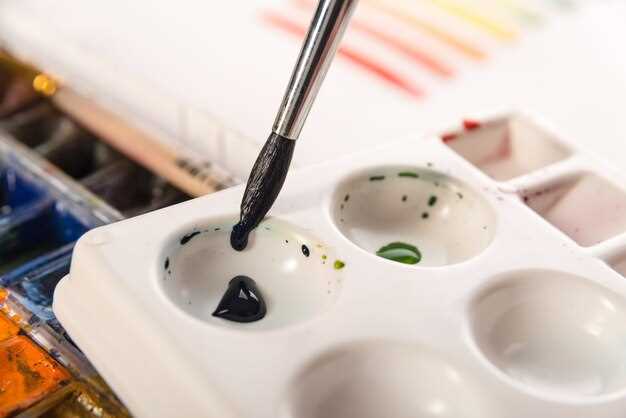
The beauty of classic cars lies not only in their design and engineering but also in their striking look. The vibrant colors used during the 70s have become iconic, evoking memories of a bygone era filled with style and character. These original shades, ranging from bold yellows to deep blues, played a significant role in defining the personality of each vehicle. When it comes to revitalizing these classics, choosing between preserving the original paint colors or opting for custom choices can be a challenging decision for car enthusiasts.
Original colors reflect a time when automobile manufacturers expressed creativity through their palettes, leaving a lasting impression on automotive history. Restoring a classic car to its original splendor not only honors the craftsmanship of the era but also enhances its value and appeal. However, the rise of custom paint options allows owners to inject their personal touch, creating a unique look that sets their vehicle apart from others on the road. This intersection of nostalgia and innovation creates a fascinating dialogue within the community of classic car lovers.
In this article, we will explore the advantages and disadvantages of both original colors and custom paint choices for classic cars. We will delve into how color affects not only the aesthetic appeal but also the emotional connection that car owners have with their vehicles. Join us as we navigate the vibrant world of classic car painting, where the past meets the present in a colorful celebration of automotive art.
Choosing Authentic Paint Colors for Classic Cars from the 1970s

Selecting authentic paint colors for classic cars from the 1970s is an essential aspect of restoration that reflects the spirit of the decade. The 1970s was characterized by bold, vibrant colors and unique hues that defined automotive aesthetics of the time. When restoring a classic car, it’s important to research and identify the original paint options available for your specific make and model.
Manufacturers during the 70s offered a wide range of colors that ranged from bright yellows and deep reds to pastel blues and greens. These colors were not only popular but also help to showcase the individuality associated with 70s car culture. Many enthusiasts seek to stay true to these original shades because they capture the essence and nostalgia of that era.
To ensure authenticity, consulting factory paint charts, owner’s manuals, and vintage brochures can provide valuable insights into the correct color options. Additionally, attending car shows or joining classic car clubs can connect you with other enthusiasts who might possess firsthand knowledge of the original paint schemes.
When it comes to application, using high-quality automotive paint that matches the original formulations can significantly enhance the car’s visual appeal. Professional painters who specialize in classic automobiles often have the expertise to replicate the original finish, ensuring that the car stays true to its historical roots.
Choosing the right paint color is a crucial step in the restoration process, as it preserves the essence of the car while also maintaining its value. By embracing authentic colors from the 1970s, classic car owners can celebrate a vibrant era of automotive history with pride.
How to Achieve a Vintage 70s Aesthetic with Custom Paint Options

To create a stunning vintage 70s look for your classic car, custom paint options play a crucial role. This era is known for its vibrant colors, bold patterns, and artistic expression. Achieving this aesthetic requires careful consideration of color choice, finish, and application techniques.
Selecting the Right Colors: The 70s featured a variety of striking colors, from deep oranges and rich browns to cool greens and bright yellows. Consider popular shades like Avocado Green, Burnt Orange, or Mustard Yellow to evoke the era. Customizing your palette can also enhance uniqueness; think about combining two or more colors for a classic two-tone style, which was all the rage during that decade.
Choosing the Finish: The finish of the paint is equally important in achieving an authentic 70s look. Glossy finishes can give your car a shiny, eye-catching effect, while matte options may provide a more subdued, vintage feel. A metallic finish can also capture the essence of the era, reflecting light in a way that enhances your color choice.
Incorporating Artistic Elements: Consider adding custom designs, such as stripes or psychedelic patterns, to give your car that extra flair reminiscent of the 70s. Techniques like airbrushing or vinyl decals can help replicate popular motifs from this time, ensuring your vehicle stands out while still paying homage to its roots.
Finally, consult with professional painters experienced in classic car restoration. They can provide insights and techniques specific to achieving the perfect 70s look while ensuring high-quality results. With the right approach to paint selection and application, your classic car can truly embody the spirit of the 1970s.
Maintenance Tips for Preserving 70s Car Paint Finishes
Maintaining the original paint finish of a 70s car is crucial for preserving its classic look and value. Here are essential tips to ensure the longevity of your vintage vehicle’s paint:
- Regular Washing: Wash your car regularly using a pH-balanced car shampoo. Avoid dish soap, as it can strip wax and damage the paint.
- Hand Drying: After washing, dry your vehicle with a soft microfiber towel to prevent water spots and scratches.
- Waxing: Apply a good quality car wax every three to four months. Wax provides a protective layer against UV rays and contaminants.
- Park in Shade: Whenever possible, park your car in a shaded area or use a car cover to protect it from direct sunlight, which can fade paint over time.
- Avoid Automatic Car Washes: Skip automatic car washes with brushes that can create swirls and scratches on vintage paint finishes.
Follow these maintenance tips to keep your 70s car looking pristine and to preserve its original paint finish for years to come.












